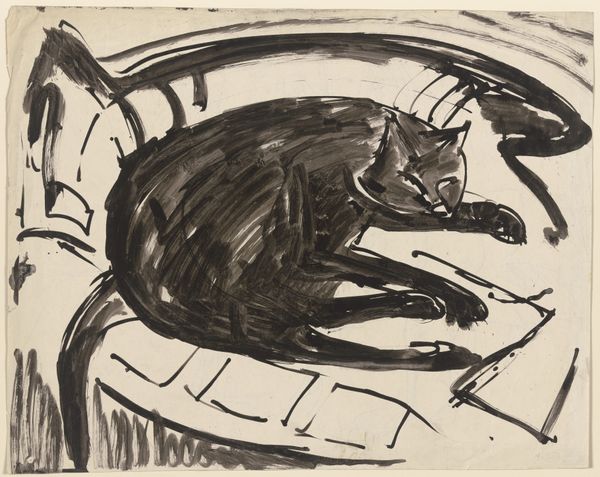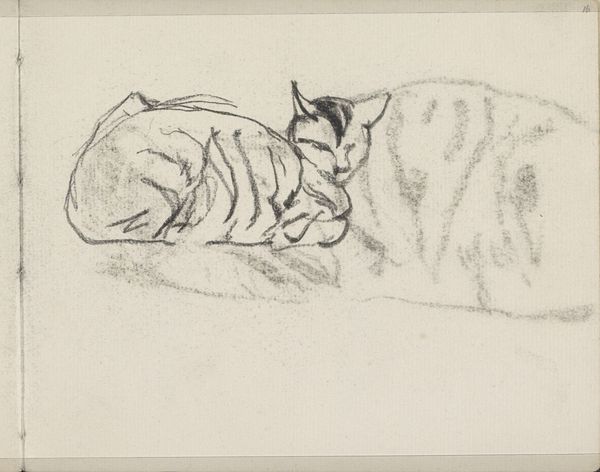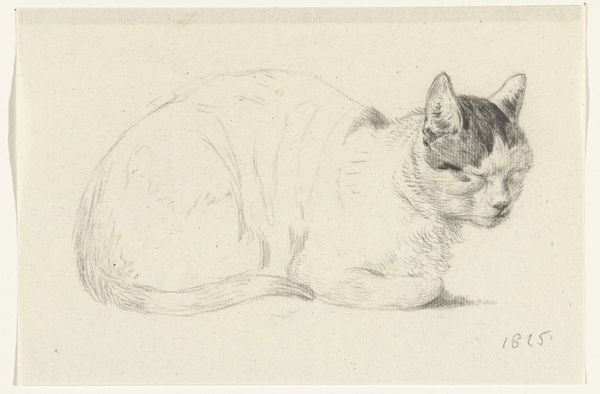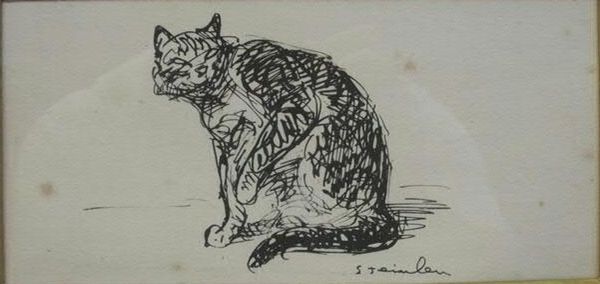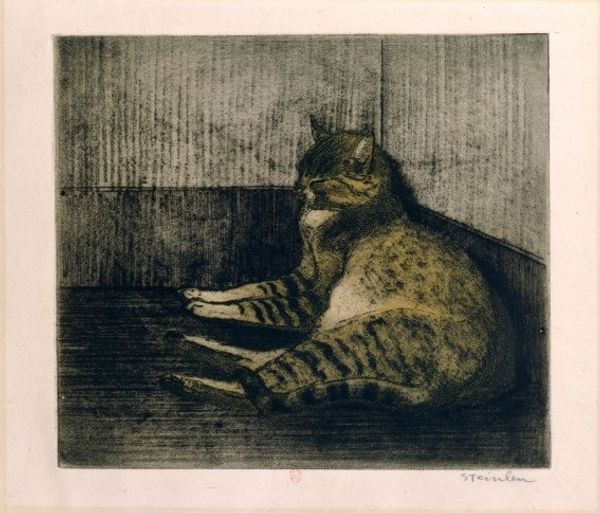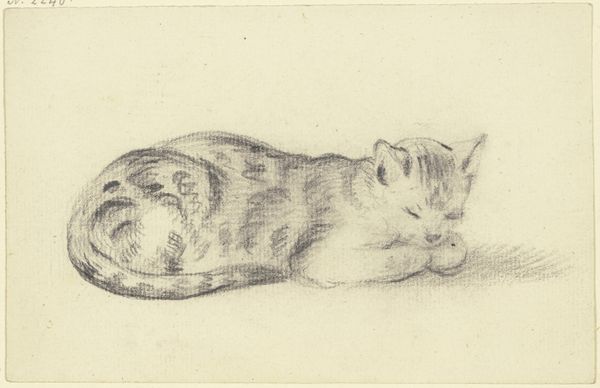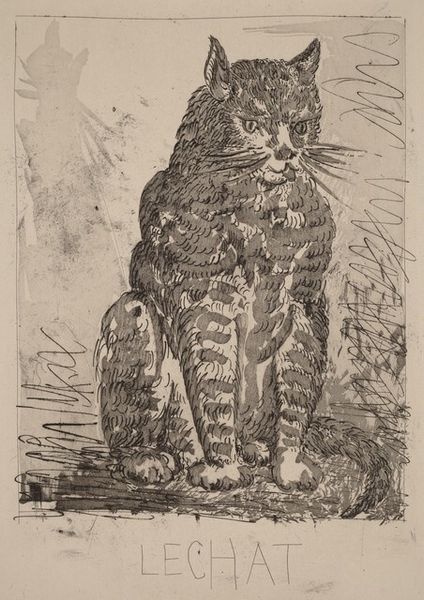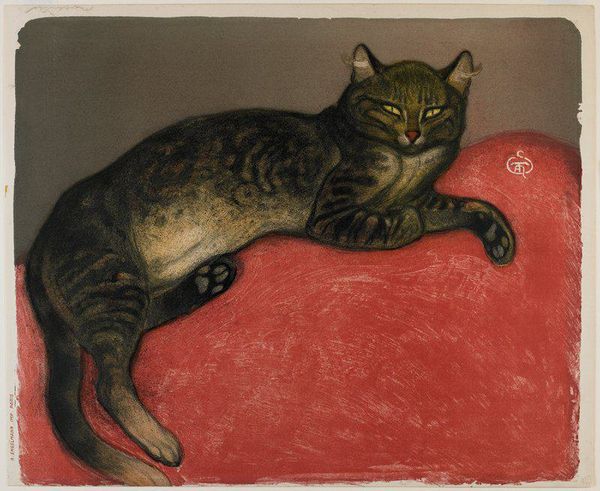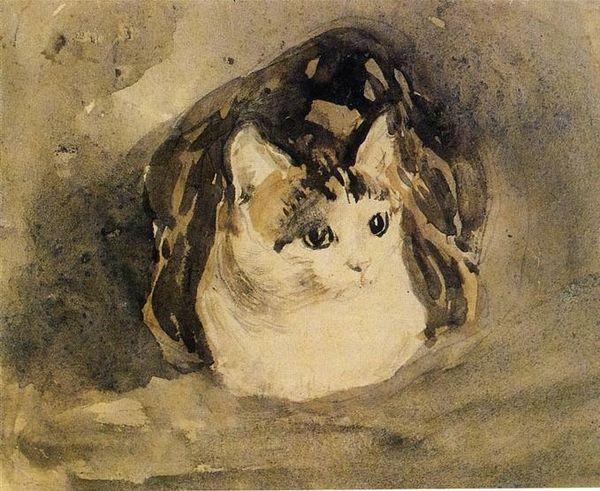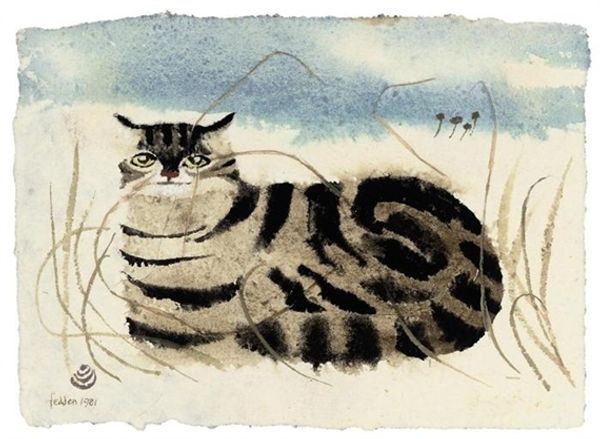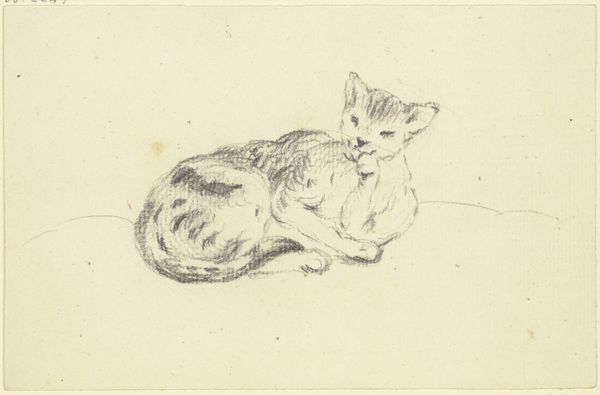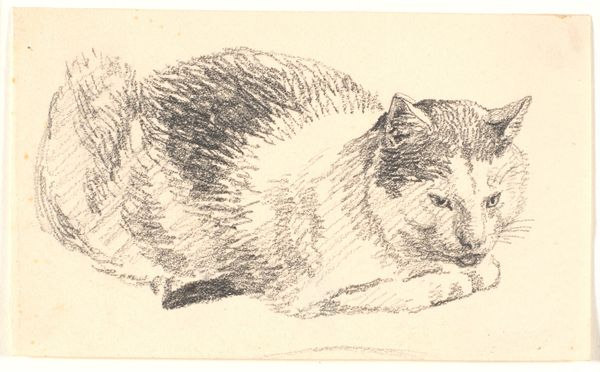
Copyright: Public domain
Editor: Here we have "Old Cat," an etching from 1902 by Théophile Alexandre Steinlen. There’s something both serene and unsettling about the cat’s gaze. What’s your read on this piece? Curator: Considering the period, the print aligns with the burgeoning interest in urban realism and social commentary. Steinlen, known for his posters and illustrations depicting Parisian street life, often featured cats as observers of the human drama. Does this depiction reinforce stereotypes about cats, say, aloof observers or solitary creatures? Or does it challenge viewers to consider their own relationship with these animals? Editor: I hadn’t thought about the cat as a social observer. Curator: It's an interesting lens, isn't it? Think about how cats populated the artistic and literary imagination during this era, becoming almost symbolic of urban alienation and, arguably, resilience. Notice how Steinlen situates the cat—it is not a pampered pet, but an integral part of its environment, perhaps even hinting at poverty, with those stark contrasts and sharp lines of the etching highlighting the rough texture of the environment. Editor: So you are saying the image does more than show the cat; it gives the animal meaning related to society at the time? Curator: Precisely. By exhibiting this image, were museums complicit in romanticizing poverty or provoking reflection on socio-economic realities? The placement of art profoundly affects interpretation and thus our collective history. Editor: This is something to think about! Seeing art this way gives it a greater story. Thanks! Curator: My pleasure. Viewing it with such context enriches our view of this work, adding multiple layers to our viewing and understanding.
Comments
No comments
Be the first to comment and join the conversation on the ultimate creative platform.
